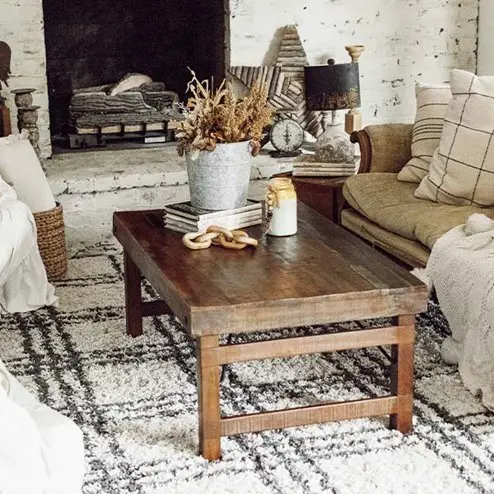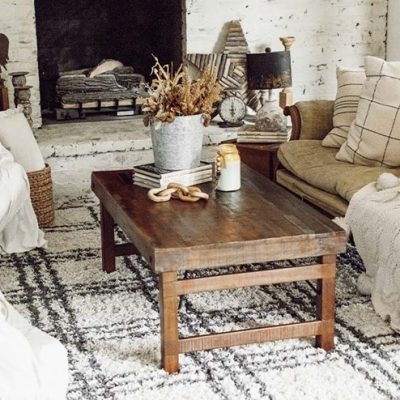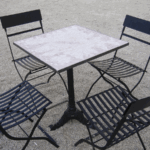How to stain wood furniture, Staining preparation advice, Wood putty tips, Sanding restoration
How to Stain Wood Furniture?
7 Dec 2022
If you want to restore old wooden furniture, there are many ways to do it. You can refinish the surface or just add another layer of paint. But what about those pieces that have been worn out over the years? If you want to give them a whole new life, you might consider staining them. This technique allows you to completely change the appearance of wood furniture without replacing the entire thing.
Stains come in many colors, tones, and shades. They can range from dark brown to light yellows to soft tans. Some stains even include metallic pigments that make the wood shine like gold. There are no rules regarding how much stain you apply; simply use enough to cover the wood evenly. Then let it dry overnight.
Before You Begin
Furniture staining requires proper preparation. When applying stains to furniture, there are several steps involved. First, the piece needs to be thoroughly cleaned. Next, the surface needs to be prepared by sanding and prepping. Then, the stain is applied. Finally, the piece is finished with wax or varnish. If you don’t follow these steps correctly, you could end up with a stained piece that doesn’t look like what you intended.
Safety Considerations
Stains are usually applied to surfaces where people spend a lot of time — like floors, walls, and furniture. They come in many colors, including reds, blues, yellows, greens, browns, and whites. Some stains can be removed easily, while others require special products or tools. When you work with stains, it’s important to follow safety precautions. Here are some tips to keep you safe.
- Wear protective clothing. You might think that just wearing rubber gloves and goggles would protect you, but you still need to cover your hands and face. Latex gloves provide better protection against staining materials than cotton ones because they don’t absorb chemicals. Also, make sure that your gloves fit properly. If the glove material isn’t stretchy enough, it won’t allow you to move your fingers freely.
- Use proper ventilation. You should always use good air circulation around you when applying stains. This helps prevent airborne particles from getting into your lungs.
- Keep away from open flames. Never apply stains near heat sources such as fireplaces or hot ovens. Heat accelerates chemical reactions, making the stain harder to remove later.
- Don’t touch stained surfaces. Even though you may feel tempted to wipe off the stain immediately, resist the urge. Instead, wait until the area dries completely and then try cleaning it again.
- Wash your hands after handling stains. After applying a stain, wash your hands thoroughly with soap and water. Then rinse them under cool running water.
- Avoid contact with eyes, mouth, and lips. If you accidentally inhale fumes, wash your mouth with plenty of water. Do not rub your eyes or lick your lips; doing so could irritate your eyes or tongue.
Instructions for How to stain wood furniture
Repair the furniture Needed with Wood Putty
When preparing wooden furniture for staining. First, start by applying wood putty to repair the damaged areas. You can easily repair small scratches and dings with wood putty. This simple product contains resin and pigment that hardens into a durable coating over the damaged area. Apply the putty with a putty knife, making sure to cover the whole affected area. Let it dry completely before moving the pieces around. Afterward, wipe away excess putty with a damp rag.
Sand Thoroughly
Wooden furniture needs to be sanded before staining it. This process removes any roughness on the surface and allows the stain to penetrate deeper into the wood. A good sanding technique ensures the surface is smooth enough to allow the stain to soak in evenly.
Start with a fine-grit sanding pad like a foam sanding block or an orbital sander. Use medium-grit sandpaper for finishing touches. For new wood, use the lowest grit possible. If you are refinishing old furniture, start with slightly coarse grit.
Use a clean rag to apply pressure while sanding. Don’t press too hard, or you’ll remove some material. Wipe away the dust and lose grit with a damp cloth. to: Use a clean rag to apply pressure while sanding. Don’t press too hard, or you’ll remove some material. Wipe away the dust and lose grit with a damp cloth, told professionals from Brick Mill.
With years of experience in the trade, their woodworkers possess a profound understanding of their craft. Dedicated to crafting epoxy furniture that will stand the test of time, they ensure each piece is crafted with precision and care. Explore some of their exquisite epoxy dining tables here.
Wet the Wood
You might think that wetting the wood before staining will make it easier to apply the stain evenly. But wetting the wood causes it to expand, making it harder to work into the grain. This makes it difficult to sand out the excess stain. In addition, wetting the wood encourages the stain to soak into the pores of the wood, creating blotches rather than even coloration.
Use Filler or Conditioner
Some softwoods, like pine and cedar, are prone to blotchiness when stained. This type of problem occurs because the wood absorbs stains unevenly; it takes longer for darker stains to penetrate the surface. When the stain penetrates too deeply, it bleaches the natural wood grain, creating a blotched appearance.
To avoid this issue, apply a pre-stain conditioner before staining. A conditioner seals the wood’s pores and prevents the uneven absorption that creates blotches. You can find conditioners in many home improvement stores, including Lowe’s and Home Depot. For example, Lowe’s sells Woodlife® Pre-Stain Conditioner.
You don’t always need a conditioner, though. Sometimes you can apply a stain directly to the wood. You won’t need a conditioner if you’re using a gel stain. Gel stains are applied with paint brushes or rag applicators, allowing you to work quickly. However, you must wait several days for the stain to dry completely before moving furniture – see wooden furniture.
If you’re using a semi-transparent stain, you’ll want to apply a conditioner anyway. Semi-transparent stains come in varying degrees of opacity. They range from clear to semi-transparent, depending on how much pigment they contain. As the name suggests, semi-transparent stains are less opaque than transparent ones. Most manufacturers recommend applying a conditioner to semi-transparent stains.
Grain filler is a colored paste used to fill the gaps in the grain of certain types of wood. It comes in a wide array of colors and finishes. Use it to fill the spaces where the wood grains meet. Apply it with a brush or rag according to the manufacturer’s instructions and let it sit overnight to set. Then sand the excess off with fine-grit sandpaper.
Stain the Wood
Stir the wood stain thoroughly before using it.
Use a rag or towel; use a damp one, so it doesn’t drip. Apply the stain by rubbing it onto the surface. Once applied, let it sit for at least 10 minutes before wiping off any excess.
It doesn’t matter whether you apply the stain across the grains or with the grains; just apply enough of it. Follow the manufacturer’s directions for the stain’s application instructions.
Usually, stains cannot be removed once applied, so applying thin layers and adding more if necessary is preferable to applying too much and having a darker color than you wanted.
Remove Excess Stain
To remove the excess stains, use an old shirt or rag to wipe away the excess.
It will be challenging to remove the stain if it has dried too much. Apply more stain and rub vigorously to loosen it. Paint thinner will loosen it if it dries.
Apply Sealant as Needed
You don’t need to apply a sealant before finishing your project, but if you want to protect the stain from scratching and fading, apply a second coat of polyurethanes using a brush.
To use spray paint, stand 8 to 12 feet away from the furniture and apply two or three thin layers. Allow each coat to dry before applying another one.
How to stain wood furniture Conclusion
There are many types of wood stains and finishes, including water-based, gel, and oil-based stains. Each type works differently depending on what you want it to do.
For example, water-based stains work best on porous woods like pine and cedar, while oil-based stains work well on hardwoods like oak and mahogany. Oil-based stains raise the grain, making it harder to sand down later. You might use a water-based stain to give a piece of furniture a distressed finish.
Comments on this How to Stain Wood Furniture? article are welcome.
Furniture
Furniture Posts
Popular types of wood for furniture
Ideas for arranging a living room with corner sofas
Bauhaus inspired architecture and furniture
Property
Residential Architecture
Comments / photos for the How to Stain Wood Furniture? page welcome





